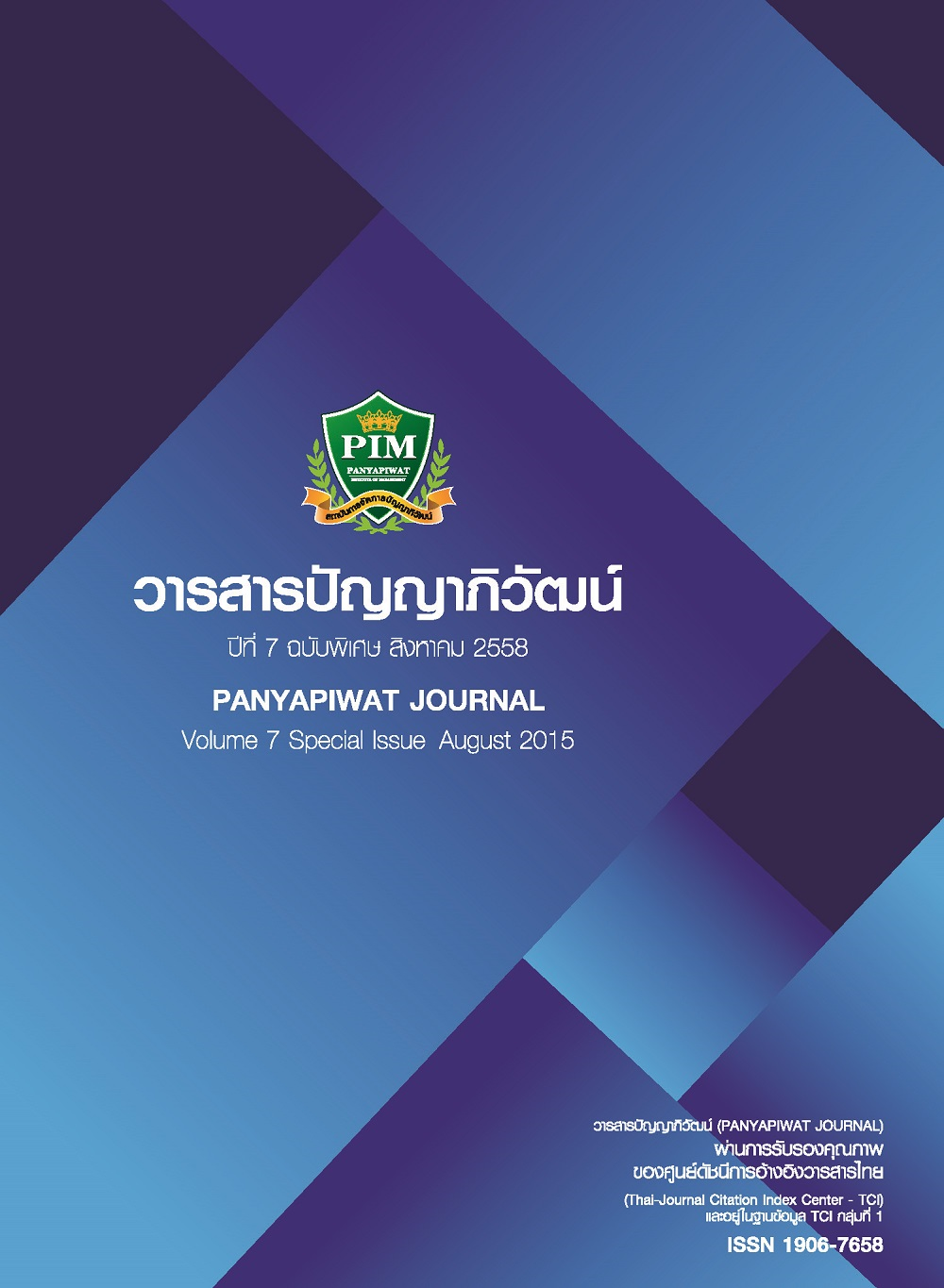电子商务与物流因素的敏感度分析 —Shopat7.com案例研究
Main Article Content
บทคัดย่อ
泰国电子商务正在逐步的增长,本文基于泰国CP All 大众有限公司Shopat7.com电子商务业务,选取物流因素(物流中运输时间和运输费用两个因素)作为基础,针对泰国Shopat7.com 顾客进行网上调查。旨在研究1)参与电子商务网购客户的各种变量(产品类别、年龄、性别、收入、住址)与物流因素的关系2)各种变量与物流时间和费用的敏感度测试。运用定量研究方法,通过相关性分析、敏感度分析等研究,得出结论:(1)物流因素的选择与年龄与住址有密切的联系;(2)各变量因素之间与运输时间敏感程度有不同,其中婴儿用品/玩具和营养食品、6-24岁的消费者、高收入的消费者、曼谷市区的消费者对于物流时间较为敏感;(3)家居用品、6-24岁的消费者、女性消费者、高收入消费者、曼谷市区的消费者对于物流费用比较敏感。通过此结果可以清晰地掌握消费者对于物流情况的感知,以及消费者在网购过程中对于物流时间与价格的选择,并对CP ALL 大众有限公司附属Shopat7.com电子商务营销发展等具有一定的实践意义。
With the growing of ecommerce in Thailand, this is a case study of CP All Public Company Limited’s shopat7.com on ecommerce and logistic. Using logistic factors comprising of cost and time as dependent variable, the study conducts the online survey on the company’s customers. The objective is to find out 1) the relationship between dependent variables and independent variables (i.e. type of product, customer age, gender, income and home location), and 2) the sensitivity analysis of above variables on logistic cost and time. This is a quantitative study focusing on correlation and sensitivity analysis. The results reveal that 1) logistic factor is related to customer age and home location, 2) infant products/toys and supplements, 6-24 year-old customers, high income customers, and customers with home location in Bangkok are sensitive to logistic time, and 3) home décor items, 6-24 year-old customers, female customers, high income customers, and customers with home location in Bangkok are sensitive to logistic cost. The results will help business operation to better understand customer perception on logistic, and provide insight for development of responsive strategy for the Shopat7.com.
Article Details
“ข้าพเจ้าและผู้เขียนร่วม (ถ้ามี) ขอรับรองว่า บทความที่เสนอมานี้ยังไม่เคยได้รับการตีพิมพ์และไม่ได้อยู่ระหว่างกระบวนการพิจารณาลงตีพิมพ์ในวารสารหรือแหล่งเผยแพร่อื่นใด ข้าพเจ้าและผู้เขียนร่วมยอมรับหลักเกณฑ์การพิจารณาต้นฉบับ ทั้งยินยอมให้กองบรรณาธิการมีสิทธิ์พิจารณาและตรวจแก้ต้นฉบับได้ตามที่เห็นสมควร พร้อมนี้ขอมอบลิขสิทธิ์บทความที่ได้รับการตีพิมพ์ให้แก่สถาบันการจัดการปัญญาภิวัฒน์หากมีการฟ้องร้องเรื่องการละเมิดลิขสิทธิ์เกี่ยวกับภาพ กราฟ ข้อความส่วนใดส่วนหนึ่งและ/หรือข้อคิดเห็นที่ปรากฏในบทความข้าพเจ้าและผู้เขียนร่วมยินยอมรับผิดชอบแต่เพียงฝ่ายเดียว”
เอกสารอ้างอิง
董丽华、龚艺华(2004)。影响消费者行为的因素。重庆职业技术学院学报,3,80。
于坤章、宋泽(2005)。信任、TAM与网络购买行为关系研究。财经理论践,26(137)。119-123。
左国平 (2007)。 网络消费者的心理与行为分析。科学管理。12,57。
Cheung, C. M. K., Chan, G. W. W. & Limayem, M. (2005). A Critical Review of Online Consumer Behavior: Empirical Research. Journal of Electronic Commerce in Organizations, 3(4), 1-19.
Li, H., Kuo, C. & Russell, M. G. (1997) An online purchasing intentions model: the role of intention to search. Journal of Retailing, 77(3), 397-416.
National Statistical Office. (2013). Retrieved August 1, 2014, from http://web.nso.go.th/en/survey/data_survey/560221_ecommearce.pdf, http://service.nso.go.th/nso/nsopublish/service/survey/sum_ecom_50.pdf.
Gong, W., Stump, R. L. & Maddox, L. M. (2013). Factors influencing consumers’ online shopping in China. Journal of Asia Business, 7(3), 215-227.
Translated Chinese References
Dong, L. & Gong, Y. (2004). Factors affecting consumer behavior. Journal of Chongqing Vocational & Technical Institute, 3(80).
Yu, K. & Song, Ze. (2005). An Examination of the relationship Between Trust, TAM and Online Shopping. The Theory and Practice of Finance and Economics, 26(137), 119-123.
Zuo, G. (2007). Analysis of psychological and behavior of online consumers. Science and Technology of West China, 12(57).


